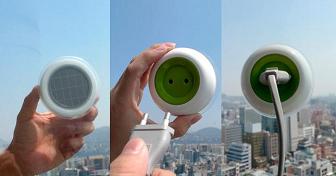Today you’re going to learn how do inverters work with solar panels and which inverter type is most efficient.
Actually, there are 3 different types of solar inverters. I’ll reveal all 3 in a minute.
But before I share it with you, let’s understand the basics first:
What is a solar inverter?
A solar inverter is a device that converts the DC electricity received from your solar panels into AC electricity.
AC power can then be used by appliances and other electronics in your home.
Let’s understand how it works and the different inverter types available for solar.
How solar inverter works?
When the sun shines on the solar panels installed on your roof, electrons within the solar cells start to move around. This movement produces DC electrical energy.
The energy then goes straight into an inverter, converting it into AC energy. As you already know, AC is the standard electrical current used to power appliances at home.
Now that we know how solar inverter works, let’s look at the various kinds and functions.
Solar inverter types
There are three types of solar inverters:
grid-tie inverters, off-grid inverters, and hybrid inverters.
Grid-tie inverters are used with the solar PV system that is integrally connected to the utility grid power. Therefore, you must connect them to the grid to function correctly.
Only the electricity consumed in the property, produced by the solar system, is automatically injected into the grid via a bi-directional meter.
The inverter stops functioning as a safety feature known as anti-eye landing during the eventual power cut.
This system doesn’t have battery backup, so you will not have access to power during a power cut.
Hence you can use this system, for example, in an area where there are rare or significantly fewer power cuts. It can alternatively be used if you have a standard inverter battery system at home for power backup during the power cut.
On the other hand, Off-grid inverters work just like the standard inverters used at home. In this system, dc power generated by the solar panel is used to charge the solar battery.
The inverter will draw stored energy from the battery, converting dc power to usable ac power for running electrical appliances during the eventual power cut. This system can be used in areas with frequent or prolonged power cuts.
A hybrid inverter system combines both grid-tie and off-grid inverters’ capabilities into one. As a result, it can be effectively used in high power cut areas or areas where there are rare power cuts.
Under normal conditions, it can supply power to the home and charge the batteries. At the same time, the system can feed excess energy into the grid.
In the case of a power cut, the device will automatically fallback to battery supply and continue to operate independently from the electricity grid.
Conclusion
Solar systems provide several advantages for their users. They help save money, are easy to install and maintain, and, most importantly, reduce your carbon footprint.
If you’re looking to go solar, you should check our website’s resources to know more about the range of affordable grid-tie, off-grid, and hybrid inverters.
